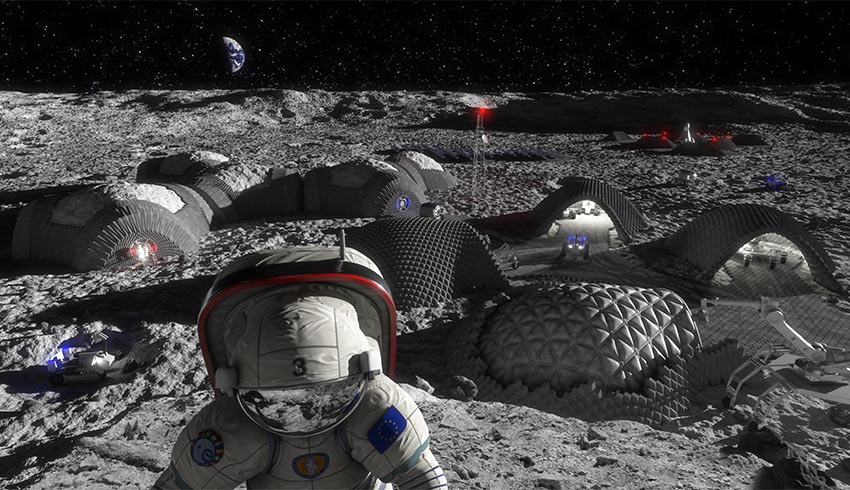
Humans would have little difficulty reaching the moon's surface with today's technology, but it is expensive – sometimes even impossible – to take all the materials we would need with us, especially if we want to stay for more than a couple of days.
For sustainable, long-term exploration, we should instead look to local resources available at the destination. As part of this endeavour, Discovery and Preparation recently supported aerospace experts Azimut Space (formerly Sonaca Space) to investigate whether it would be possible to create 'heat-storage bricks' out of lunar regolith.
In space, energy typically comes via solar panels that provide almost instantaneous electricity when the sun shines on them. But inhabitants of the moon could expect to spend up to 16 days in darkness during the lunar night.
Finding a sustainable energy solution that collects sunlight during the long lunar days and stores it for use at night is essential to make the prospect of long-term lunar habitation a reality.
Regolith bricks offer a way of storing daytime solar energy so that electricity can be produced at night; this would be vital for any humans living and working on the moon. The stored heat could also be released directly to keep robotic equipment warm enough to function during the long hours of darkness.
Aidan Cowley from ESA's Human Spaceflight and Robotic Exploration Directorate, who oversaw the research, explained, "Apollo astronauts brought back small amounts of moon rock, allowing us to create very similar 'fake' lunar regolith here on Earth. In this study, we used Earth rock with comparable properties to moon rock, crushed into a powder until the particles matched the size of those in the lunar regolith."
After making this powder into a brick, the team pumped energy into their imitation lunar regolith to see how well it could store heat. They also connected it to a heat engine to create electricity using the energy stored inside it.
"Any moon-based technology would face incredibly tough conditions – long nights, temperatures ranging from minus 173 degrees to 127 degrees and extremely low pressures. We mimicked these conditions as best as we could to create a 'moon-like' environment for our brick," explained project manager Luca Celotti from Azimut Space.
Receive the latest developments and updates on Australia’s space industry direct to your inbox. Subscribe today to Space Connect here.












